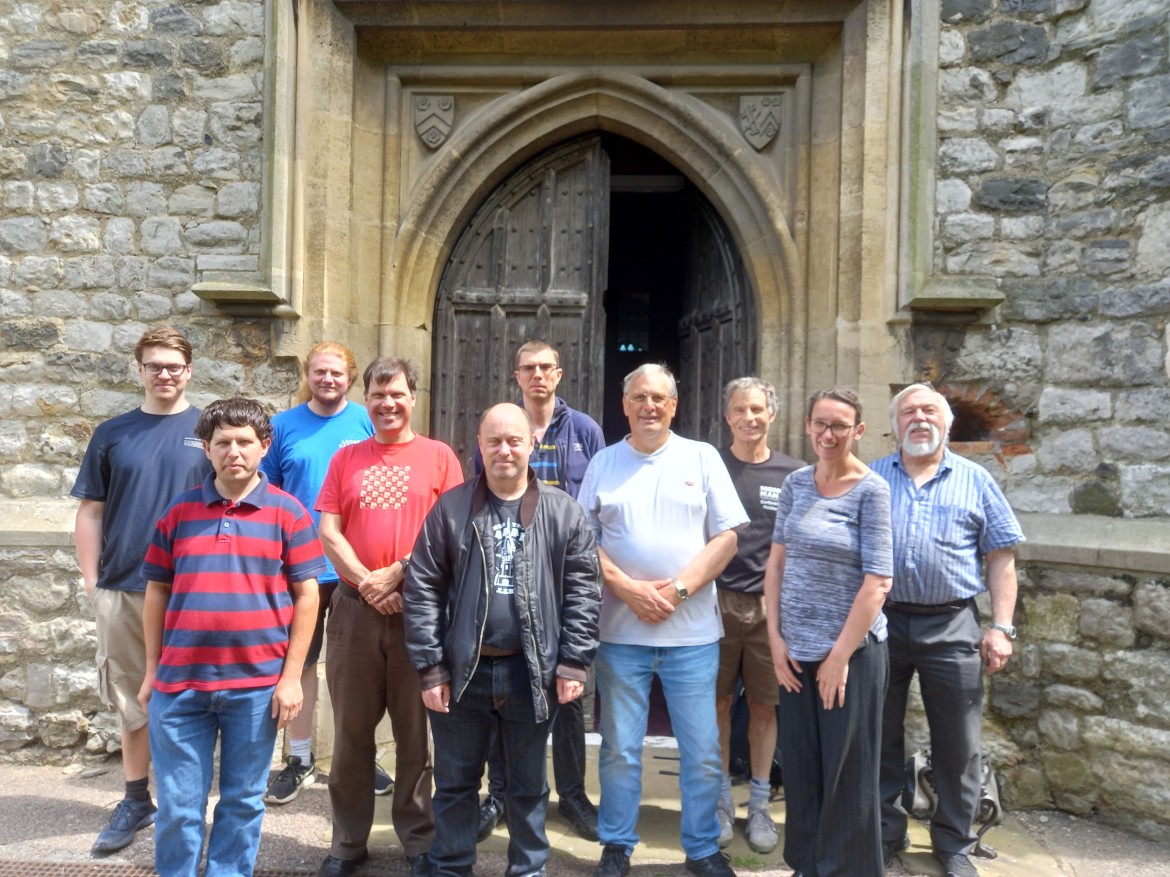Bell Ringers’ Outing to Suffolk 2023
On Saturday 16th September 2023, our coach of 47 bell ringers and friends left St Andrew’s for our autumn outing to Suffolk.
The day was organised by John Church helped by Jonathan Slack who learnt to ring in Suffolk as a child.
Our first stop was the pretty village of Boxford where we were welcomed with coffee and cake in the church. The bells here were heavy and quite difficult but we managed to ring Stedman, Cambridge and Rutland.
Our lunch stop was Hadleigh, another heavy ring of 8 bells with the tenor just over a ton. One of our ringers, James Riley, has family in Hadleigh and they were able to watch and listen to him ring the tenor to Grandsire Triples.
Following our excellent lunch, we travelled to Buxhall, a newly augmented ring of 8 bells; followed by Great Finborough, an easy going ring of 6 bells in a beautiful country setting.
Our final stop of the day was Stowmarket where we were provided with tea and cakes in the church café. We were privileged to be the first visiting band to ring on the improved and re-tuned bells which have just been augmented from 8 to 10. Jamie Slack was able to ring with his Granddad who rings in Suffolk and Carys Hayward rang Plain Hunt on 9 for the first time. The more experienced ringers rang Stedman Caters and Little Bob Royal.
Everyone enjoyed the day and our thanks go to John and Jonathan for all their hard work.

Carys Hayward at Hadleigh with Mum and sister

Experienced ringers at Stowmarket

Jamie Slack at Stowmarket with Father Jonathan (far right) and John Church (far left)













